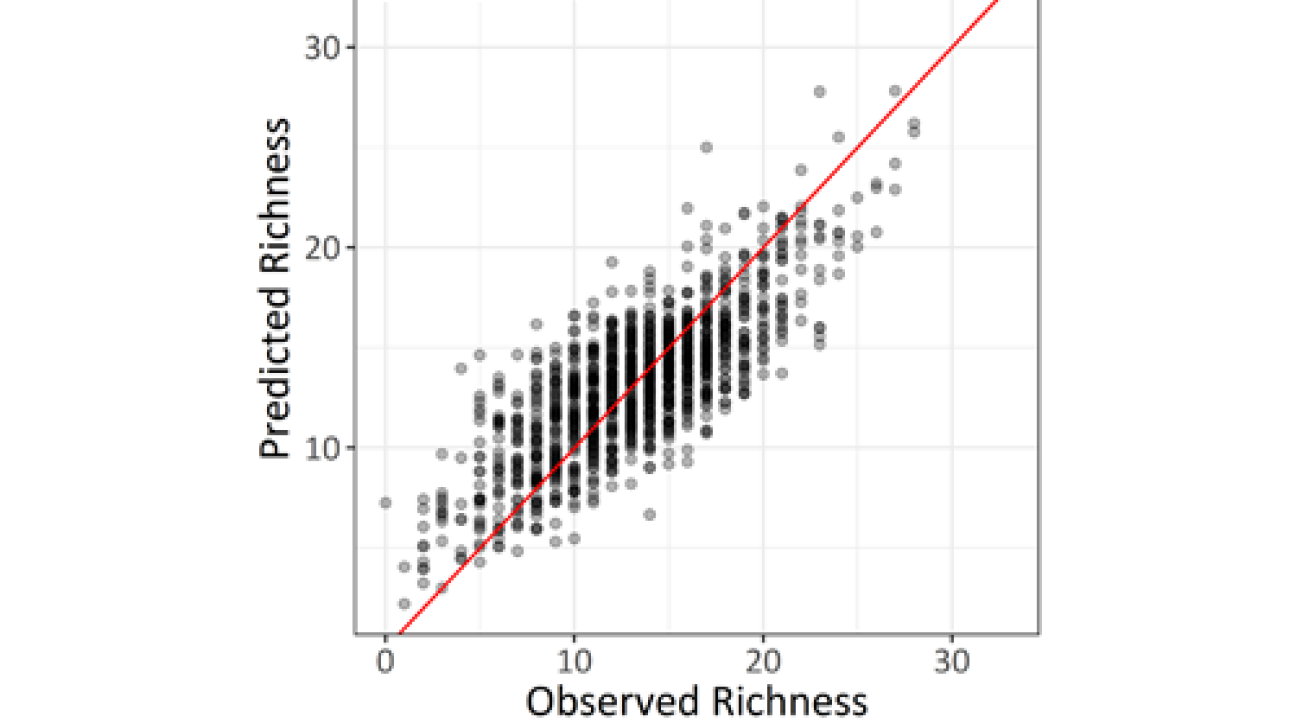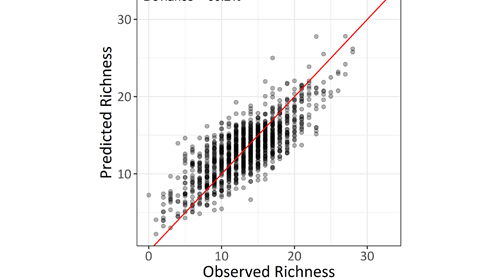Clark: Estimating bird species richness with acoustic patterns
Quinn, C., Burns, P., Hakkenberg, C. R., Salas, L., Pasch, B., Goetz, S., & Clark, M. (2023). Soundscape components inform acoustic index patterns and refine estimates of bird species richness. Frontiers in Remote Sensing, 4, 35. https://doi.org/10.3389/frsen.2023.1156837

Ecoacoustic monitoring has proliferated as autonomous recording units (ARU) have become more accessible. ARUs provide a non-invasive, passive method to assess ecosystem dynamics related to vocalizing animal behavior and human activity. With the ever-increasing volume of acoustic data, the field has grappled with summarizing ecologically meaningful patterns in recordings. Almost 70 acoustic indices have been developed that offer summarized measurements of bioacoustic activity and ecosystem conditions. However, their systematic relationships to ecologically meaningful patterns in varying sonic conditions are inconsistent and lead to non-trivial interpretations. We used an acoustic dataset of over 725,000 min of recordings across 1,195 sites in Sonoma County, California, to evaluate the relationship between 15 established acoustic indices and sonic conditions summarized using five soundscape components classified using a convolutional neural network: anthropophony (anthropogenic sounds), biophony (biotic sounds), geophony (wind and rain), quiet (lack of emergent sound), and interference (ARU feedback). We used generalized additive models to assess acoustic indices and biophony as ecoacoustic indicators of avian diversity. Models that included soundscape components explained acoustic indices with varying degrees of performance (avg. adj-R2 = 0.61 ± 0.16; n = 1,195). For example, we found the normalized difference soundscape index was the most sensitive index to biophony while being less influenced by ambient sound. However, all indices were affected by non-biotic sound sources to varying degrees. We found that biophony and acoustic indices combined were highly predictive in modeling bird species richness (deviance = 65.8%; RMSE = 3.9 species; n = 1,185 sites) for targeted, morning-only recording periods. Our analyses demonstrate the confounding effects of non-biotic soundscape components on acoustic indices, and we recommend that applications be based on anticipated sonic environments. For instance, in the presence of extensive rain and wind, we suggest using an index minimally affected by geophony. Furthermore, we provide evidence that a measure of biodiversity (bird species richness) is related to the aggregate biotic acoustic activity (biophony). This established relationship adds to recent work that identifies biophony as a reliable and generalizable ecoacoustic measure of biodiversity.


